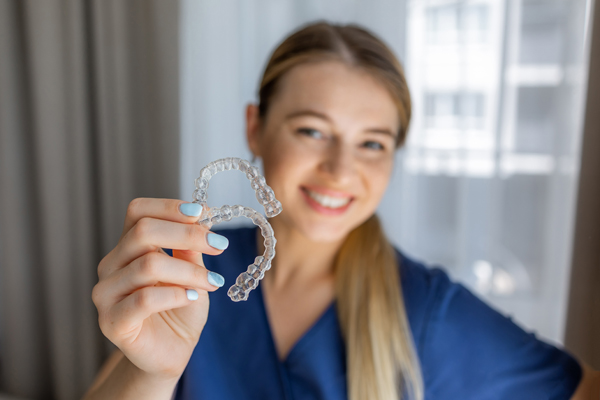Pediatric Dental X-Rays: Common Questions Answered

Pediatric dental X-rays provide a detailed view of a child's teeth, gums, and jaw. These imaging tools help pediatric dentists diagnose potential oral health issues early on and ensure a child's dental development is on track. For parents, understanding pediatric dental X-rays can help them make informed decisions about their child's dental care.
What are pediatric dental X-rays?
Pediatric dental X-rays are imaging tools that capture detailed pictures of a child's teeth, jaw, and surrounding structures. These images allow pediatric dentists to see areas of the mouth that are not visible during a standard visual examination. X-rays are particularly useful in identifying issues such as cavities between the teeth, developmental abnormalities, and the positioning of permanent teeth beneath the gums. A pediatric dental X-ray also uses advanced technology to minimize exposure while providing clear images, making it both efficient and safe.
Why does my child need a pediatric dental X-ray?
Pediatric dental X-rays are necessary to detect and prevent dental problems before they become severe. While a visual exam can identify surface-level issues, X-rays reveal underlying conditions that could affect a child's oral health and development. Some specific reasons a pediatric dentist may recommend X-rays include:
- Identifying cavities between teeth that are not visible during a standard dental exam
- Monitoring the progress of permanent teeth erupting below the gumline
- Detecting infections or damage to the roots of teeth
- Assessing the alignment of teeth and jaw development
Early detection through X-rays allows children to get the treatment they need while reducing the risk of more invasive procedures in the future.
If a child has never had a cavity, why do they need an X-ray?
Pediatric dental X-rays show more than cavities. For example, these images can be used to examine a child's emerging teeth, identify bone disease, and evaluate dental injuries. Dentists can also use them to help plan a young patient's orthodontic therapy. In addition, dental treatment is typically less expensive and extensive if dental issues are detected in their early stages.
Are pediatric dental X-rays safe?
The safety of pediatric dental X-rays is a common concern among parents. Advances in dental technology have made dental X-rays safer than ever before. Modern equipment uses low-dose radiation. Pediatric dentists also follow strict guidelines and protections to prevent exposing children to too much radiation. For example, they will have the child wear a protective lead apron and thyroid collars to shield their body during the X-ray. At the end of the day, pediatric dental X-rays pose a much lower threat to young patients than undiagnosed and untreated dental issues.
How often do children need to get pediatric dental x-rays?
The frequency of pediatric dental X-rays depends on a child's age, oral health, and risk for dental issues. Children prone to cavities or with a history of dental problems may require X-rays more frequently. However, as a general rule, children will need to get more X-rays than adults. This is because their mouths change and expand rapidly. They are also more prone to tooth decay.
The American Academy of Pediatric Dentistry recommends that children with a high risk of tooth decay should get dental X-rays every six months, with follow-up appointments every three months to monitor early signs of cavities. Children with a low or moderate risk of decay will typically only need X-rays every 12 to 24 months, with follow-ups every 6 to 12 months.
What are the types of X-rays used in pediatric dentistry?
Pediatric dentists can use several types of X-rays based on a child's needs. The four most common types of X-rays used in pediatric dentistry include:
- Bitewing X-rays: Show the upper and lower back teeth and are used to detect cavities between teeth.
- Panoramic X-rays: Provide a full view of the teeth, jaw, and surrounding structures, often used to evaluate growth and development.
- Periapical X-rays: Focus on one or two teeth, showing the entire tooth from crown to root.
- Occlusal X-rays: Capture the entire arch of teeth and are used to monitor tooth development in younger children.
How can parents prepare their children for X-rays?
Parents should prepare and reassure their children before they undergo a pediatric dental X-ray. They can explain the process in simple terms, highlighting that it is a painless and quick part of a routine dental visit. Additionally, the pediatric dentist can use kid-friendly language and techniques to help young patients feel at ease.
It can also be helpful to schedule the appointment when the child is well-rested and less likely to feel nervous. A supportive environment in a pediatric dental office can create a stress-free experience. This is especially true if the child has a pre-established relationship with the pediatric dental team.
Schedule your child's next appointment today
Pediatric dental X-rays are an invaluable tool in pediatric dentistry, protecting the health and development of a child's smile. Has it been a while since your little one's last appointment? Call our Reston office to schedule a visit at Precision Orthodontics & Pediatric Dentistry today.
Request an appointment here: https://www.orthodonticprecision.com or call Precision Orthodontics & Pediatric Dentistry at (703) 391-8800 for an appointment in our Reston office.
Check out what others are saying about our services on Yelp: Read our Yelp reviews.
Recent Posts
A general dentist is often the first to inform parents that a teenage patient needs braces. As an orthodontic option, Invisalign® for teens can produce results in just a few months with minimal discomfort. This process can work to straighten teeth that are out of line, crooked, or twisted, and there may be no need…
Invisalign® for Teens can straighten teeth without any metal brackets or wires. Instead, it uses clear aligners to help teenage patients achieve a more picture-perfect smile. Although popular and well-known, it is common for parents to have questions about how this treatment works for younger patients. Knowing what to expect with Invisalign for Teens from…
Teeth straightening can do more than simply enhance the appearance of one's smile. Straighter teeth are easier to clean, helping patients maintain their oral health in the process. Crowded or severely crooked teeth are more difficult to clean, which can lead to cavities. Thankfully, an orthodontist can help patients straighten their teeth in various ways…
Invisalign® for teens is an invisible straightening tool for your children's teeth. Invisalign uses custom, clear aligners to straighten teeth. Patients receive Invisalign aligners every two weeks. The custom trays move teeth gradually.When most people think about metal braces, they may think about teenagers. However, not all teenagers require traditional braces. Some teenagers may benefit…


